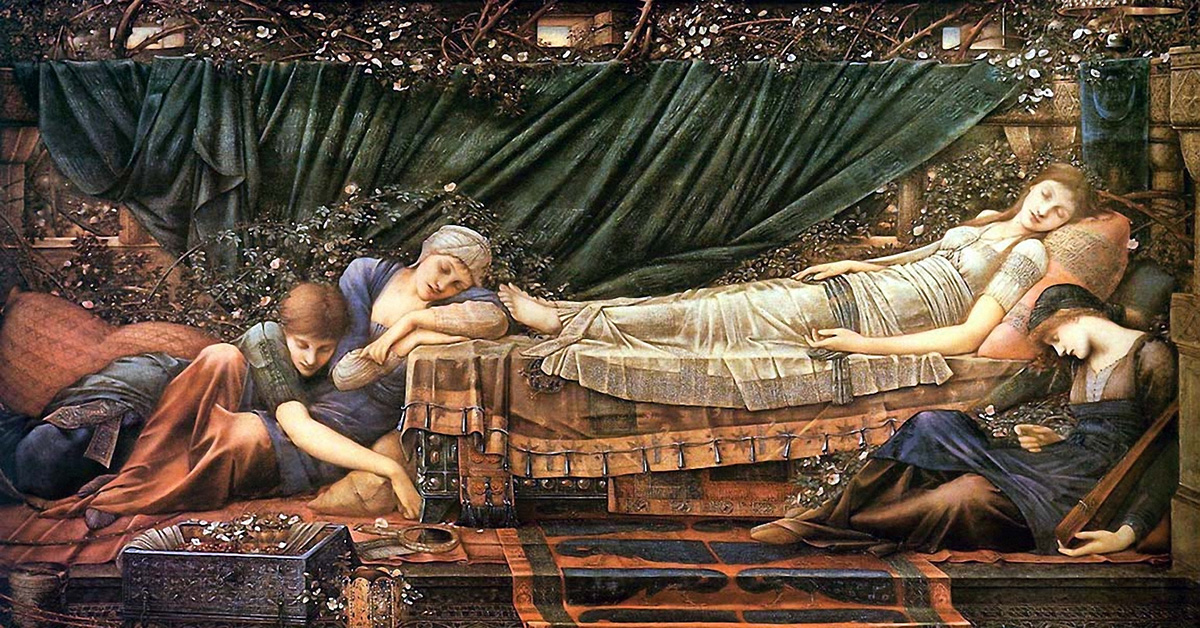Tour date: MAY 13 – 20, 2023
William Morris (1834-1896), arguably the greatest designer-craftsman that England has ever produced, remains a perennially topical influence – not only in the field of arts and crafts but also as a pioneer of conservation and a visionary social thinker. During his lifetime, his lectures, writing and practical examples gave birth to the Arts & Crafts Movement, which advocated the vigorous regeneration of the handicrafts and an emphatic rejection of industrialism and commercialism.
Our tour will trace many of the events and locations associated with Morris’s hugely prolific career, while also examining his fruitful collaborations with many of the leading artists, designers and architects of his time and his subsequent influence on later craft-workers.
The tour begins in Oxford where he met so many of those who influenced him, with whom he worked and who he later influenced. One of his major collaborators was Edward Burne-Jones and work by them can be seen in many locations in the city, where both artists were students in the 1850s and where one of their earliest joint projects – with D. G. Rossetti and other Pre-Raphaelites – can be seen in the Oxford Debating Union’s Arthurian Murals. Decorative art by the Morris circle is part of the collections at the Ashmolean Museum, and the Morris firm’s spectacular stained glass is featured at Christ Church Cathedral and the Chapel of Manchester College.
We will then visit Kelmscott Manor, the 17th-century country home that Morris immortalised in his utopian novel News from Nowhere. And then we are off for a private tour of Buscot Park, where we shall see the remarkable sequence of Briar Rose paintings created by Morris’s friend Burne-Jones (1833-1898). Their intricate detail provided an inspirational source of imagery for Arts & Crafts designers in all sorts of media.
We will visit two parish churches which had special significance to Morris as a pioneer campaigner for the conservation of historic buildings and their ancient artefacts. St Mary’s, Fairford, which he knew well, contains the most complete surviving series of medieval stained glass of any English church. The inspiration of ancient glass is evident in Selsley church, by the architect George Frederick Bodley, where the glazing scheme was carried out entirely by Morris, Marshall, Faulkner & Co. in the early 1860s.
Nearby is Owlpen Manor, a late-medieval building lovingly conserved by the architect Norman Jewson, who also planned the magnificent gardens. Likewise notable for its architecture, hilltop setting and historic furnishings is Hilles, designed by architect and conservationist Detmar Blow, who as a young man drove the agricultural wagon used as Morris’s hearse for his burial at Kelmscott. The house contains a unique Morris tapestry, created at the renowned Merton Abbey workshops in the 1890s. And we are guests of his grandson, Detmar Blow, for dinner.
William Morris’s formative years and the inspiration that he drew from rural England are themes explored in our visits to Marlborough College where, as a teenage schoolboy, he became fascinated by the long sequence of English history and pre-history. While there we are also invited to one of the foremost private collections of Arts and Crafts work by Morris and his circle.
We then head to London, where Morris spent the greater part of his life and where outstanding examples of his work can be seen at the Victoria & Albert Museum and at Holy Trinity Church, Chelsea (known as the ‘Cathedral of the Arts & Crafts’). We shall visit Morris’s home from the later 1870s, Kelmscott House in Hammersmith, where the former coach-house was originally used for his first experiments in carpet-weaving and then as the lecture hall for his political activism. Nearby was his Kelmscott Press, and our tour includes the house of his close collaborator, Emery Walker: among the highlights here is furniture designed for Walker’s own use by Morris’s friend, the architect Philip Webb (1831-1915).
The tour continues with visits to Webb’s first independent commission, Red House, built for Morris and his wife Jane between 1859 and 1861. Richly decorated in Pre-Raphaelite style, the house illustrates the romantic medievalism of early work by Morris and the firm he founded in 1861, Morris, Marshall, Faulkner & Co. We shall see important examples of the Firm’s stained glass at Langton Green and Speldhurst churches, as well as Philip Webb’s late masterpiece, Standen, a country house exquisitely furnished by Morris & Company.
There can be few more influential figures in the applied and decorative arts than William Morris. This tour, which encompasses many aspects of his creative genius, will enable participants to experience a vibrant tradition of design and craftsmanship that blossomed between the 1880s and the early twentieth century.

